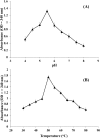Characterization of siderophore producing arsenic-resistant Staphylococcus sp. strain TA6 isolated from contaminated groundwater of Jorhat, Assam and its possible role in arsenic geocycle
- PMID: 30180796
- PMCID: PMC6122220
- DOI: 10.1186/s12866-018-1240-6
Characterization of siderophore producing arsenic-resistant Staphylococcus sp. strain TA6 isolated from contaminated groundwater of Jorhat, Assam and its possible role in arsenic geocycle
Abstract
Background: Microorganisms specifically bacteria play a crucial role in arsenic mobilization and its distribution in aquatic systems. Although bacteria are well known for their active participation in the different biogeochemical cycles, the role of these bacteria in regulating the concentration of arsenic in Brahmaputra valley has not been investigated in detail.
Results: In this paper, we report the isolation of an arsenic resistant bacterium TA6 which can efficiently reduce arsenate. The isolate identified as Staphylococcus sp. TA6 based on the molecular and chemotaxonomic identification (FAME) showed resistance to the high concentration of both arsenate and arsenite (As(III) = 30 mM; As(V) = 250 mM), along with cross-tolerance to other heavy metals viz., Hg2+, Cd2+, Co2+, Ni2+, Cr2+. The bacterium also had a high siderophore activity (78.7 ± 0.004 μmol) that positively correlated with its ability to resist arsenic. The isolate, Staphylococcus sp. TA6 displayed high bio-transformation ability and reduced 2 mM As(V) initially added into As(III) in a period of 72 h with 88.2% efficiency. The characterization of arsenate reductase enzyme with NADPH coupled assay showed the highest activity at pH 5.5 and temperature of 50 °C.
Conclusions: This study demonstrates the role of an isolate, Staphylococcus sp. TA6, in the biotransformation of arsenate to arsenite. The presence of ars operon along with the high activity of the arsenate reductase and siderophore production in this isolate may have played an important role in mobilizing arsenate to arsenite and thus increasing the toxicity of arsenic in the aquatic systems of the Brahmaputra valley.
Keywords: Arsenate reductase; Arsenic; Assam; Jorhat; Siderophore; Staphylococcus sp..
Conflict of interest statement
Ethics approval and consent to participate
Not Applicable.
Consent for publication
Not Applicable.
Competing interests
The authors declare that they have no competing interests.
Publisher’s Note
Springer Nature remains neutral with regard to jurisdictional claims in published maps and institutional affiliations.
Figures







References
-
- Singh AK. Published in proceedings of national seminar on hydrology with focal theme on water quality held at National Institute of arsenic contamination in groundwater of north eastern India. Hydrology. 2004. http://wilsonweb.physics.harvard.edu/arsenic/references/singh.pdf. Accessed 8 Dec 2017
-
- Devi NL, Chandra I, Shihua Q. Recent status of arsenic contamination in groundwater of northeastern India – a review. Rep Opin. 2009;1:22–32.
-
- Today N. Water sources in 23 districts of Assam contaminated with arsenic and fluoride » northeast today. 2017. https://www.northeasttoday.in/water-sources-in-23-districts-of-assam-con.... Accessed 27 Aug 2017.
-
- Das S, Bora SS, Prasad JL, Barooah M, Yadav RN, Chetia M. Groundwater arsenic contamination in north eastern states of India. J Environ Res Dev. 2015;9:621–632.
Publication types
MeSH terms
Substances
LinkOut - more resources
Full Text Sources
Other Literature Sources
Medical
Research Materials

